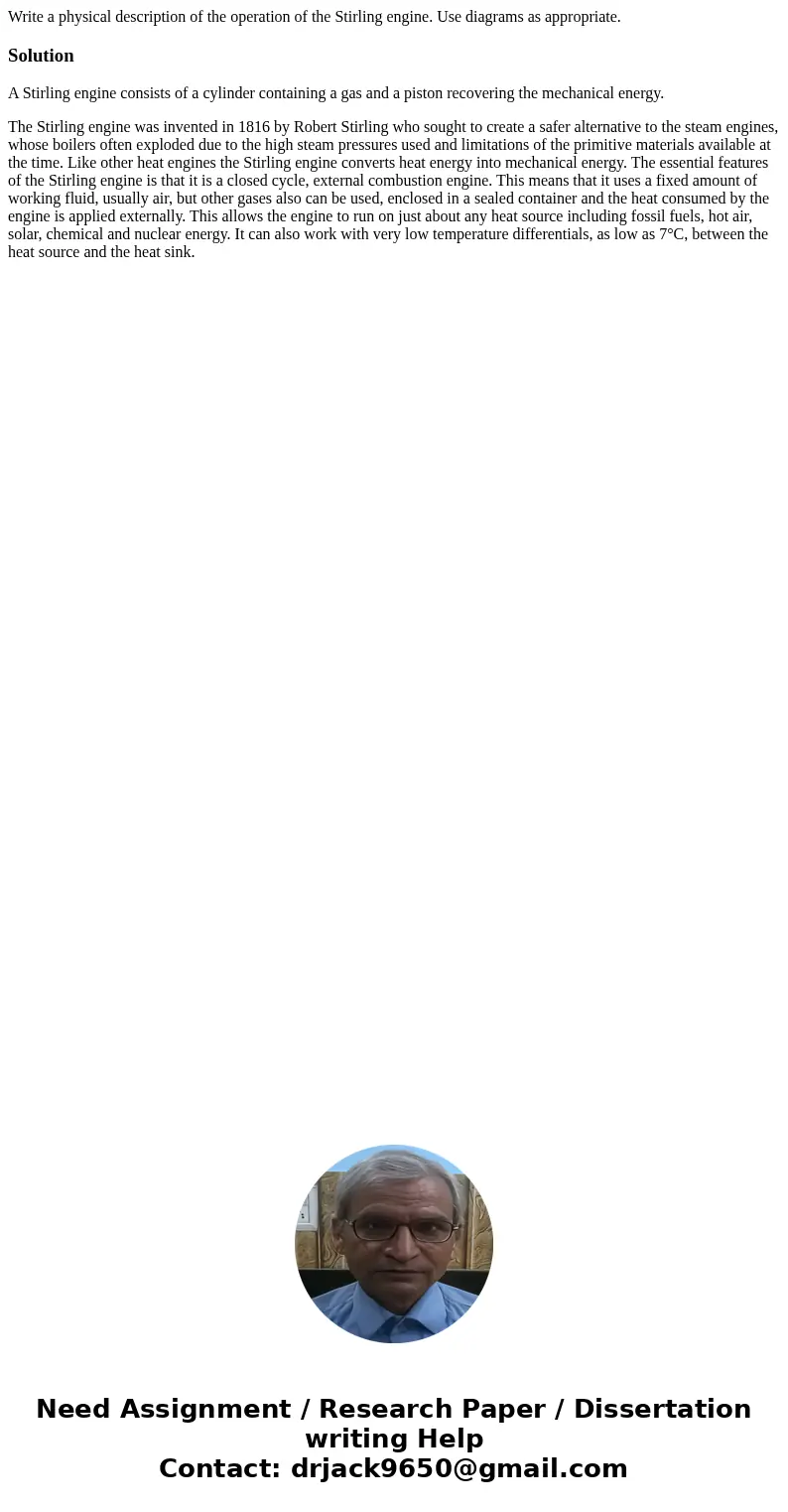Write a physical description of the operation of the Stirlin
Solution
A Stirling engine consists of a cylinder containing a gas and a piston recovering the mechanical energy.
The Stirling engine was invented in 1816 by Robert Stirling who sought to create a safer alternative to the steam engines, whose boilers often exploded due to the high steam pressures used and limitations of the primitive materials available at the time. Like other heat engines the Stirling engine converts heat energy into mechanical energy. The essential features of the Stirling engine is that it is a closed cycle, external combustion engine. This means that it uses a fixed amount of working fluid, usually air, but other gases also can be used, enclosed in a sealed container and the heat consumed by the engine is applied externally. This allows the engine to run on just about any heat source including fossil fuels, hot air, solar, chemical and nuclear energy. It can also work with very low temperature differentials, as low as 7°C, between the heat source and the heat sink.

 Homework Sourse
Homework Sourse